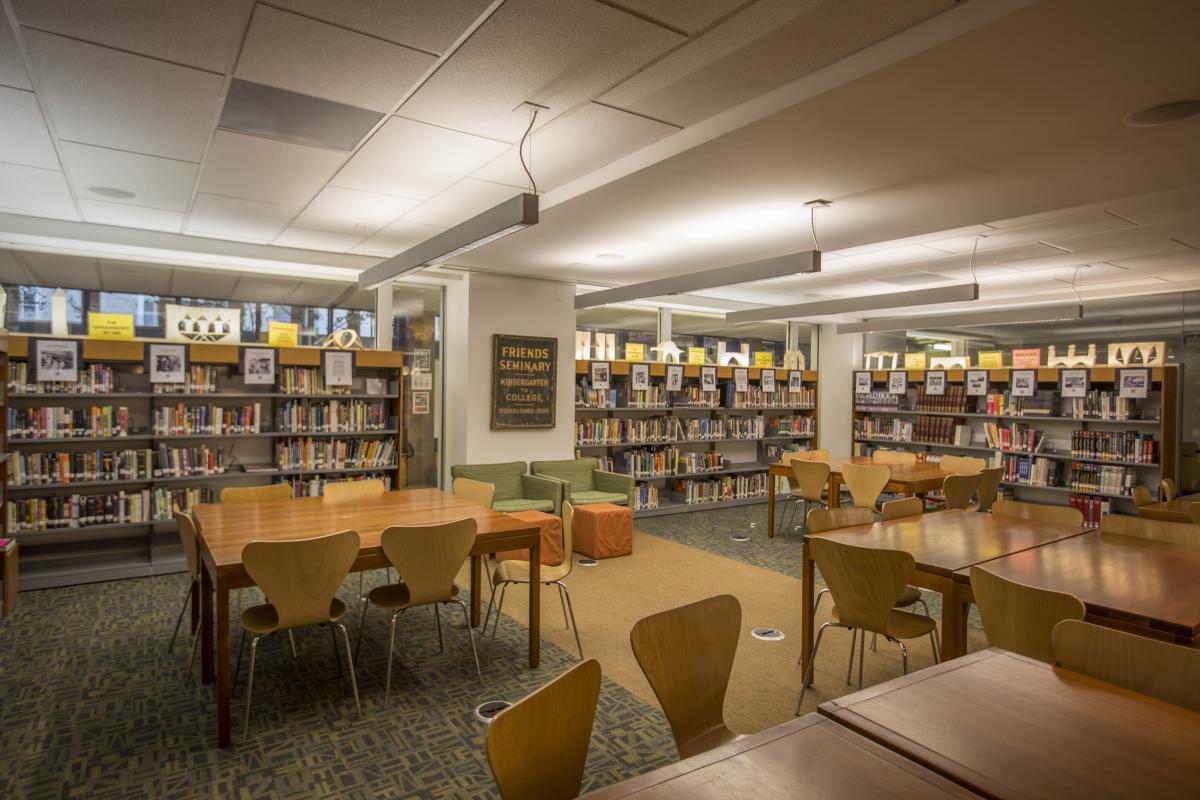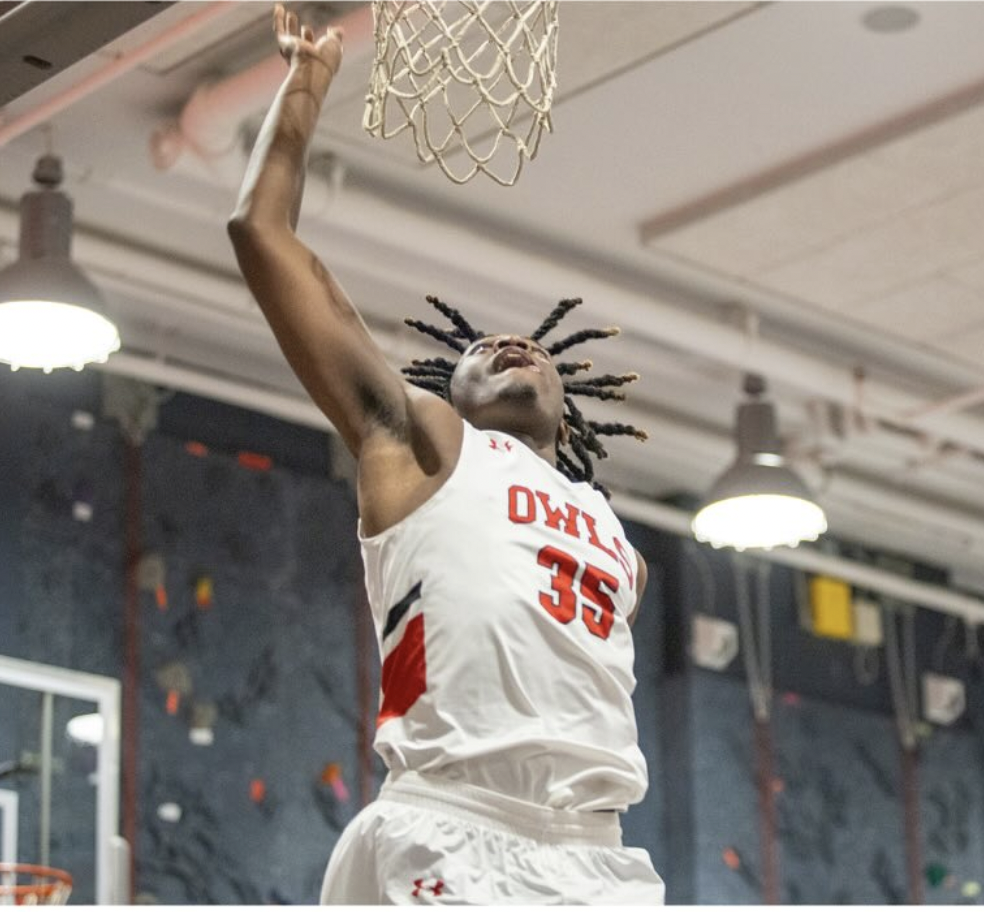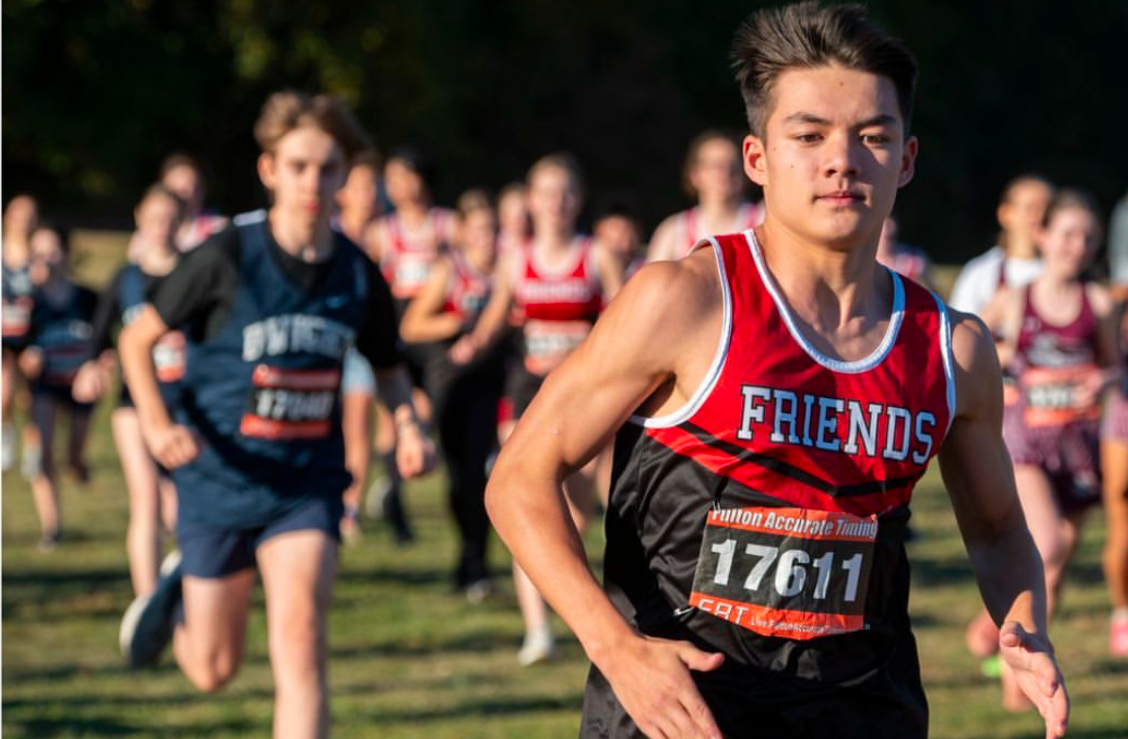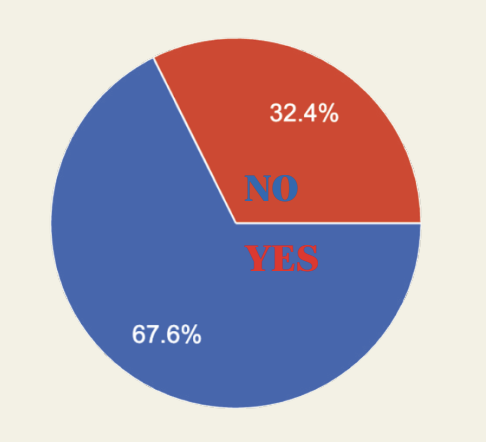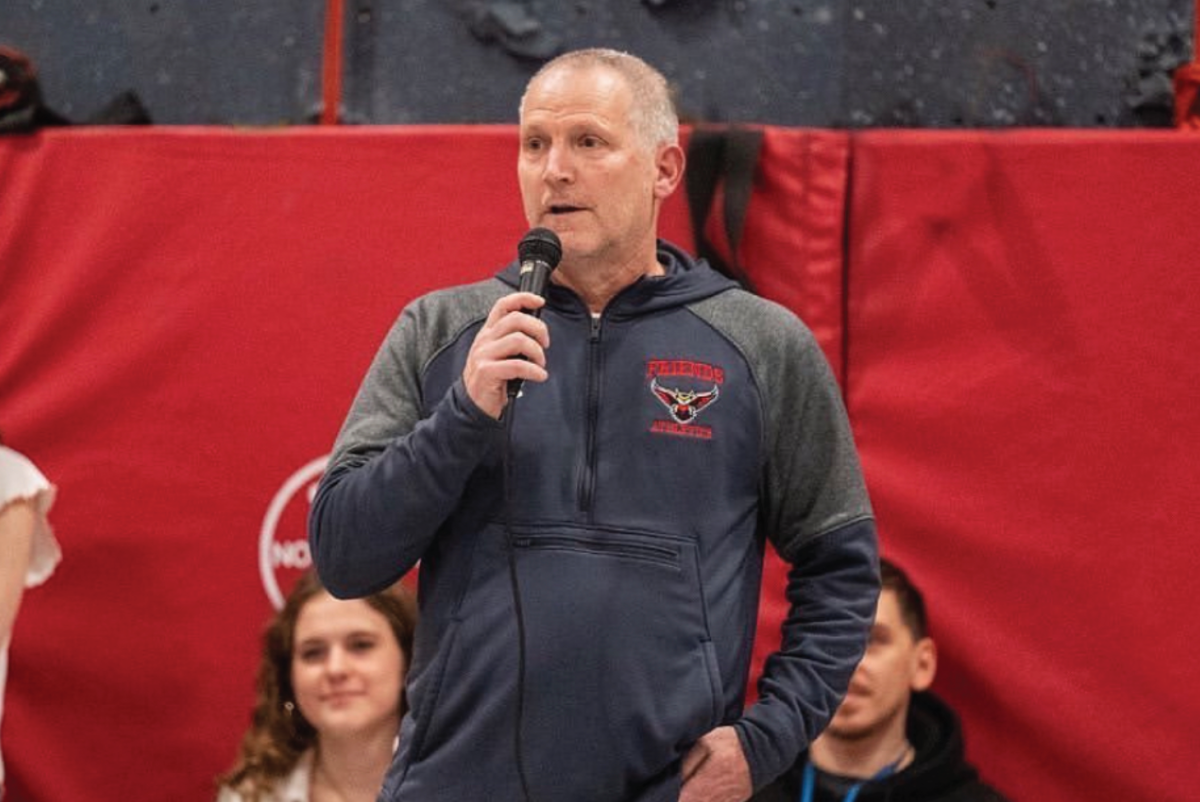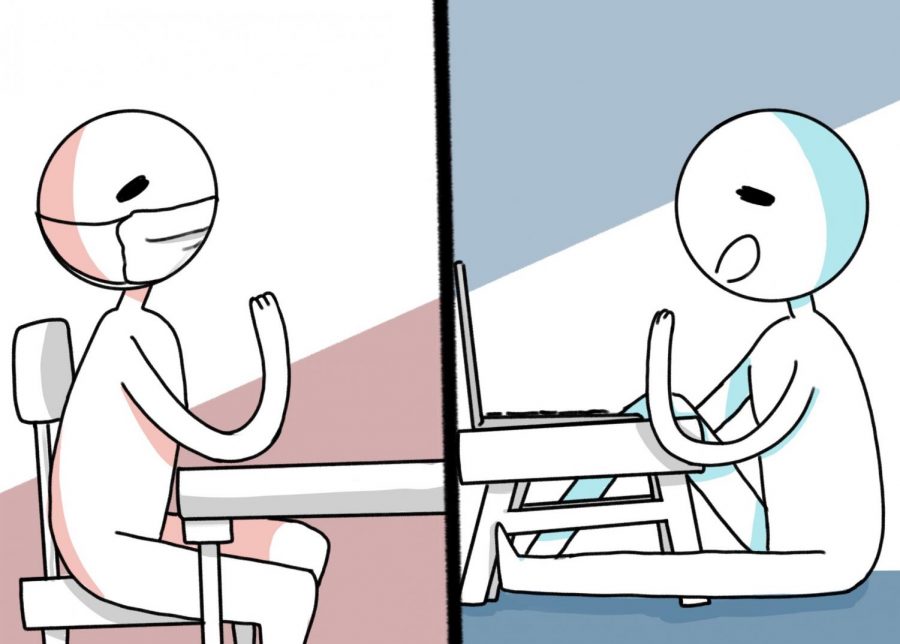Virtual learning poses difficulties to teachers
November 18, 2020
Teaching digitally is not for the faint of heart. It requires an enormous amount of effort, compromise, patience, and adaptability. When Friends shut down last March, teachers planned for a pandemic that would only last a few months. The shutdown has since carried from one academic year to the next, forcing teachers to rethink and retool their approach to distance learning.
Teaching and learning over Zoom is definitely not the same as being in person. Educators had to get familiar with Zoom’s many features such as screen-share, annotation, and polls, and then they had to figure out how to utilize those features to the best of their abilities. The switch from SmartBoards and whiteboards to screens and computers was certainly challenging.
Many felt that the most prominent facet online school lacked was the social aspect. “I miss those opportunities we could share and have conversations and get to know each other,” said Coleman Hall, who teaches multivariable calculus and precalculus in the upper school. “Not like we can’t do that on Zoom but because we’re only meeting together two hours a week, it really creates a time crunch and we want to get through all our material.”
Teachers cite the bonds they make with students as the primary reason they miss teaching and being in-person. Eli Sidman, a science teacher in both middle and upper school, feels he has lost connection with his students. “I might be hearing that students are having a conversation about Among Us [an online multiplayer deduction game] and I have something I want to contribute and then redirect them back on task, and I can’t,” he said. “Those kinds of bonding moments are really few and far between.”
Overwhelmingly, teachers miss the community cultivated in an in-school environment. Lynn Lin, who teaches Chinese in all three divisions, has missed the vibrancy of the Friends community. “The community and the space and the people are sort of what I miss, and every time you see someone, you’re like, ‘Oh my God, it’s so good to see you but I can’t hug you or touch you or get close to you,’” she said. “I miss everyone sitting in the Meeting House. I miss listening to the jazz concerts, the various performances. The heartbeat of the school, which is the people, and then the creative things that come out from the people.”
Over the summer, educators and administrators worked tirelessly to move their classes to a digital format that would give students the best learning experience they could have over Zoom. Hall said, “I rewrote worksheets for every lesson, notes for every lesson, figured out strategies to deliver precalculus in the best way possible that isn’t requiring students to have to look at a screen all the time.”
Hours of preparation go into each online lesson. Grading, some teachers say, takes three times as long online. Others say that the time they spent making instructional videos for students also added more time to their prep. Regardless, in the shift from physical to virtual teaching, the workload for many teachers has increased greatly. “I typically listen to all sixteen [students] at a time, but now I have to listen to sixteen separate recordings, so it takes sixteen times as long to hear one song,” said Kristin Marchilena, the upper and middle school chorus teacher. “There are things I’ve had to take off my plate that we’d normally be doing. We all have to do that right now because there wasn’t enough time in the day to do pre-pandemic work.”
Other teachers explained that while their teaching workload may not have grown so drastically, they’ve had to figure out a way to navigate a delicate work-life balance. Many teachers have families and responsibilities outside of teaching. Lin, who has two children under five, said “I find myself having this debate in my head about choosing between: “Should I grade those papers or grade those homeworks now?’ or ‘Should I spend time with my son and not plop him in front of the TV?’ So those are kind of the decisions that I’m sort of going back and forth regularly in my head.”
While it is difficult at times to have family at home while trying to work, teachers say they found a silver lining in the time they’ve spent with family members and loved ones.
Teachers have also found new tools and methods of teaching that they’d incorporate into their classrooms when in-person learning resumes. Marchilena said she found a program called Noteflight, which allows users to create, hear, and view music scores. She also said, “We’re going to start using the Soundcheck feature where you get automatic feedback from Noteflight. How in-tune am I? Am I on the right pitch?” Sidman mentioned that he might try to incorporate labs from Pivot—a website that produces interactive video labs that students can analyze and observe—into his regular curriculum.
Teachers have also looked to the positives that will come out of the distance learning experience. “On the whole, I don’t prefer this by any stretch of the imagination and I think that the positive things, though they exist, don’t necessarily outweigh the negatives,” Hall said. “But I also think there’s a lot of things that I’ve learned through this experience that will make me a better teacher in the future.”

